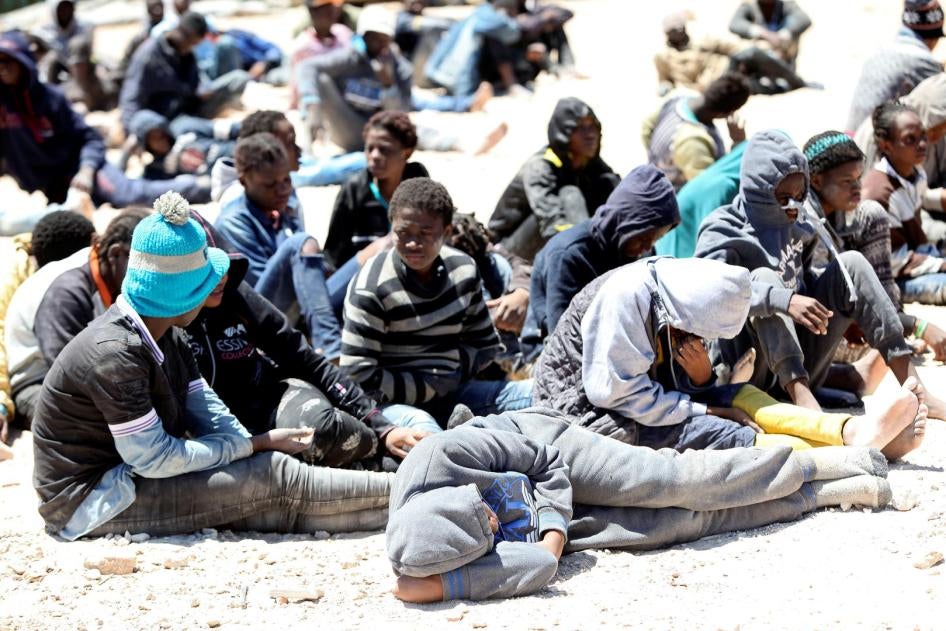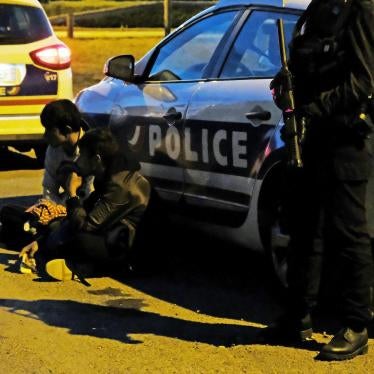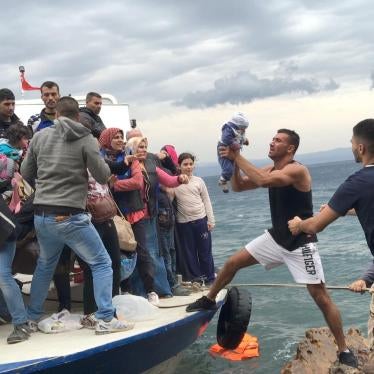There seems to be an inexorable momentum toward militarisation of the Mediterranean and of migration control.
US president Barack Obama recently endorsed a European Union proposal for a Nato operation in the central Mediterranean, building on the coalition’s presence in the eastern Mediterranean (Aegean Sea) since February.
EU foreign policy chief Federica Mogherini is leading efforts to push the EU’s naval “anti-smuggling” mission, Operation Sophia, currently operating in international waters off the Libyan coast, into Libyan territorial waters.
Let’s drop anchor for a moment to reflect on what this could mean for migrants and asylum seekers.
This is the latest instalment in EU efforts to stem the flow of migrants and asylum seekers from North Africa.
With a significant drop in crossings in the Aegean Sea, all eyes are now on the central Mediterranean, with around 30,000 having crossed, mainly from Libya, since the beginning of this year.
Italian officials and even German chancellor Angela Merkel have gone so far as to suggest that the EU should strike a deal with Libya similar to the one with Turkey, which allows the return of asylum seekers on the presumption that they are “safe” there.
The assessment that Turkey is safe for refugees and asylum seekers is wrong.
But the idea that Libya, riven by warring factions and with a fledgling and contested government of national unity that the EU is desperate to legitimise, can provide a safe haven is positively mind-boggling.
Given the daily dangers of life in Libya, it seems beyond the point to mention that Libya has not ratified the 1951 Refugee Convention and has no domestic refugee law or asylum procedure.
The dangers to migrants who find themselves in Libya pre-date even the civil war in the country; in 2006 Human Rights Watch published a report on the cruel treatment migrants experienced in detention centres there.
Long-standing, well-documented abuses against migrants and asylum seekers in Libya led the European Court of Human Rights to condemn Italy unequivocally for intercepting migrant boats and pushing them back to Libya in 2009.
The court’s ruling laid down clear red lines: once EU authorities have effective control or custody over migrants, regardless of where that occurs, they are bound by the European Convention on Human Rights.
Italy had in this case violated a fundamental norm of EU and international law: the prohibition on returning someone to a place where they face threats to their lives and freedom, as the court found they did in Libya.
In other words, European countries cannot wash their hands of responsibilities towards migrants and refugees, whether on the high seas or in the territorial waters of a non-EU country.
Migrants and asylum seekers in Libya continue to face threats in Libya. Human Rights Watch again documented torture, overcrowding, dire sanitation conditions, and lack of access to medical care in migrant detention centres in 2014.
'Shame and frustration'
Detainees we interviewed told us guards beat them with iron rods, sticks, and rifle butts, and whipped them with cables, hose pipes, and rubber whips made of car tires and plastic tubes, sometimes over prolonged periods of time on the soles of their feet.
In one centre five detainees said guards suspended them upside down from a tree and then whipped them. As recently as May 2015, migrants and asylum seekers I interviewed spoke of living in fear in Libya and recounted being robbed, beaten, and extorted by employers, common criminals, security forces and militias.
The bottom line is that the EU and Nato should not push anyone back to Libya. That would expose people to the risk of serious violations, violate international and EU law, and undermine the EU’s global standing.
EU cooperation with Libyan forces to prevent people from getting beyond Libyan territorial waters is no less fraught with ethical and legal questions if the consequence is torture, indefinite arbitrary detention in abysmal conditions or deportation to countries of origin where they may face persecution and worse.
Mogherini recently said she felt “shame and frustration over the walls we see rising in Europe”. Yet a naval cordon on water is no less shameful than one of concrete and razor wire on land.
In July, the EU is due to propose its next steps following an internal evaluation of Operation Sophia, and Nato will hold a summit in Warsaw. These will be defining moments.
First, save lives
What the EU and Nato should do is pretty simple. First, save lives. Regardless of who controls the waters, and whether a merchant, military, or leisure vessel, all ships are bound by the laws of the sea to respond to boats in distress.
Overcrowded, unseaworthy migrant boats are by definition in distress. The laws of the sea also require that ship captains take rescued passengers to a safe place.
So, second, bring people to EU countries. In an act of genuine solidarity, participating countries should commit to taking a portion of those rescued or intercepted, and to process their claims fairly and efficiently.
They can return those who are not in need of international protection to their countries of origin, following a fair process that respects their rights. They should allow those in need of refuge to stay and give them a real shot at rebuilding their lives in dignity.
No one deserves to be returned to, or stranded in, Libya.










